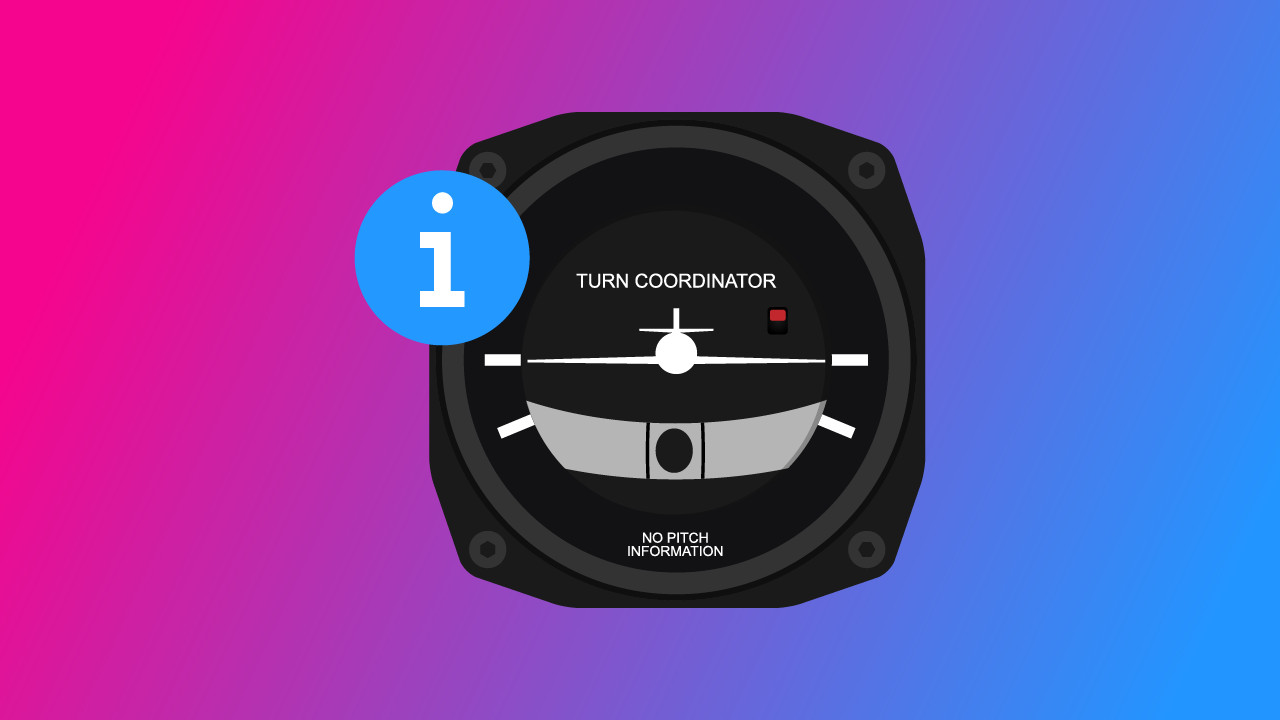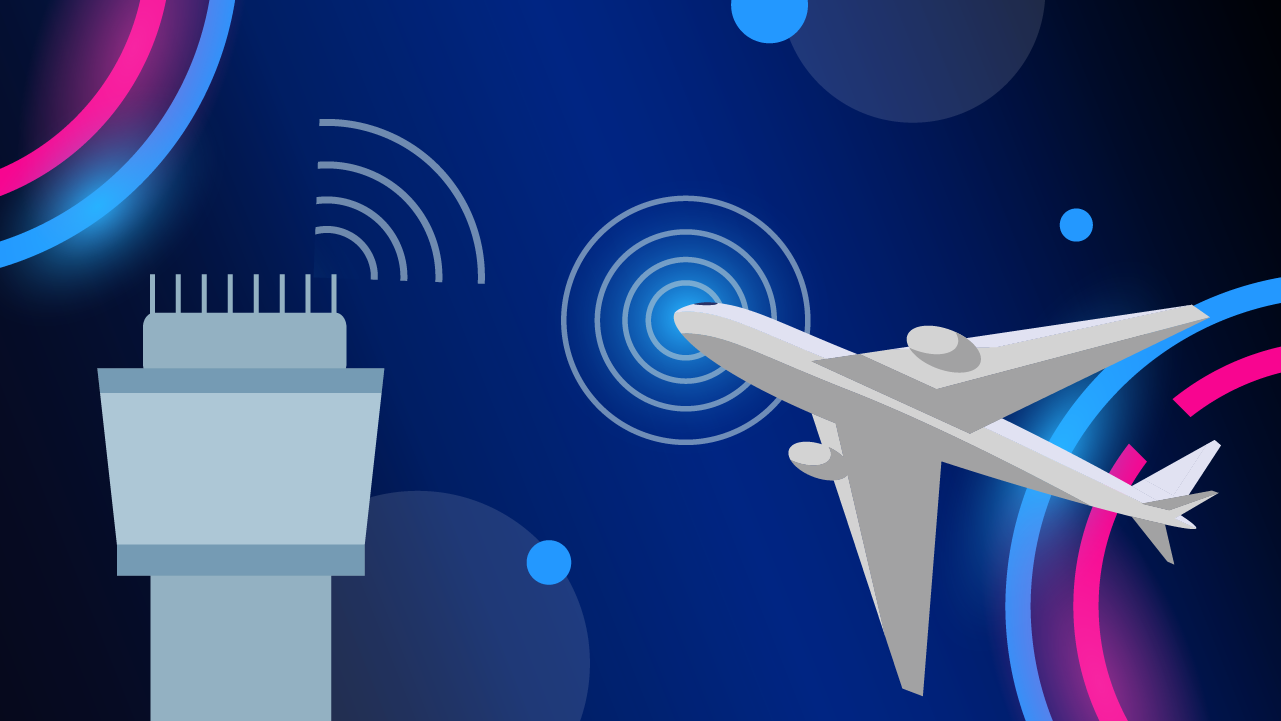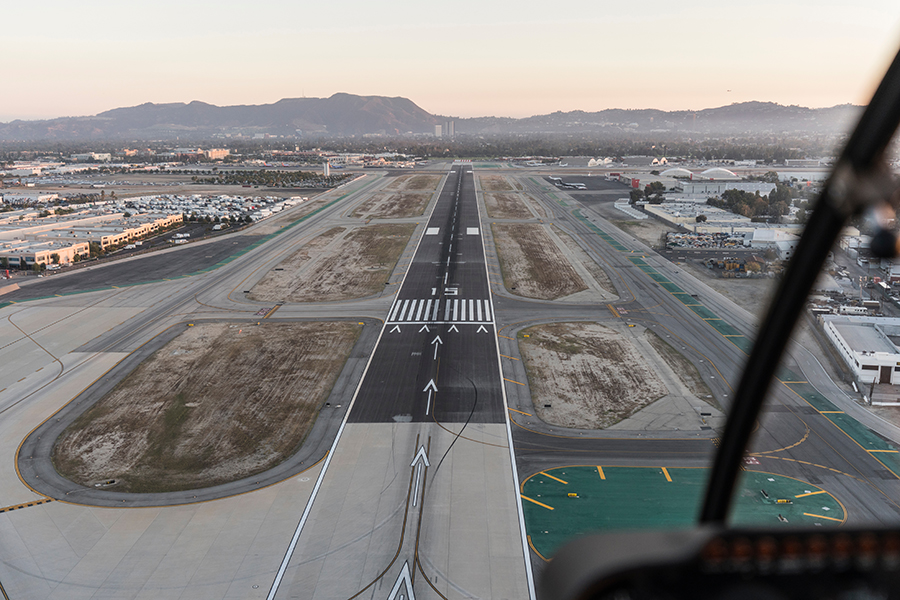Pilots rely on different instruments to help them traverse the skies. One very important tool is the turn coordinator. This small but powerful instrument combines multiple functions into one device, offering insight into the aircraft’s turn rate and balance.
This guide unpacks the turn coordinator’s purpose, how it operates, and what sets it apart from similar instruments.
Key Takeaways
- The turn coordinator combines a rate of turn indicator and a slip/skid indicator into one instrument.
- It uses a gyroscope mounted at an angle to provide turn rate and coordination information.
- Standard rate turns are calibrated at 3 degrees per second or a 2-minute 360-degree turn.
- Modern EFIS systems are replacing turn coordinators, but the slip/skid indicator is still required.
What Is a Turn Coordinator?

The turn coordinator is a vital instrument, particularly for Instrument Flight Rules (IFR) operations.
A turn coordinator displays the rate of turn as well as roll information and is used to determine the coordination of a turn (e.g., slipping or skidding) and the bank angle required for a specific rate of turn (e.g., 2 minutes for 360 degrees). The turn and slip indicator, an older version of the turn coordinator, only provides the rate of turn information.
Turn Coordinator Operation

The turn coordinator consists of a gyroscope mounted at a 30-degree angle upward in relation to the longitudinal axis of the aircraft.
The turn coordinator combines two instruments into one:
- A rate of turn indicator
- A slip/skid indicator (Inclinometer)
The Rate of Turn Indicator
The rate of turn on a turn coordinator is represented by a small airplane symbol that rolls (rotates) right or left depending on the bank angle and the rate of turn.
This indication is achieved due to the effect of precession on the gyro inside the turn coordinator.
The Slip/Skid Indicator (Inclinometer)
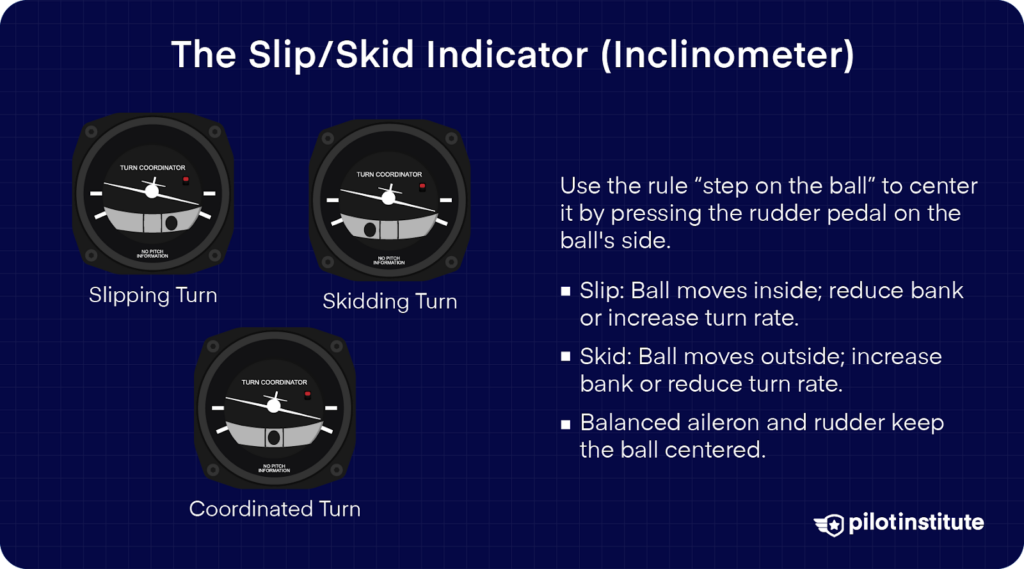
The inclinometer is a black ball situated below the rate of turn indicator. This ball is suspended in a liquid that allows it to roll right, left, or remain in the middle of the tube, depending on the aircraft’s slip/skid (balance) condition.
Turn Coordinator Construction
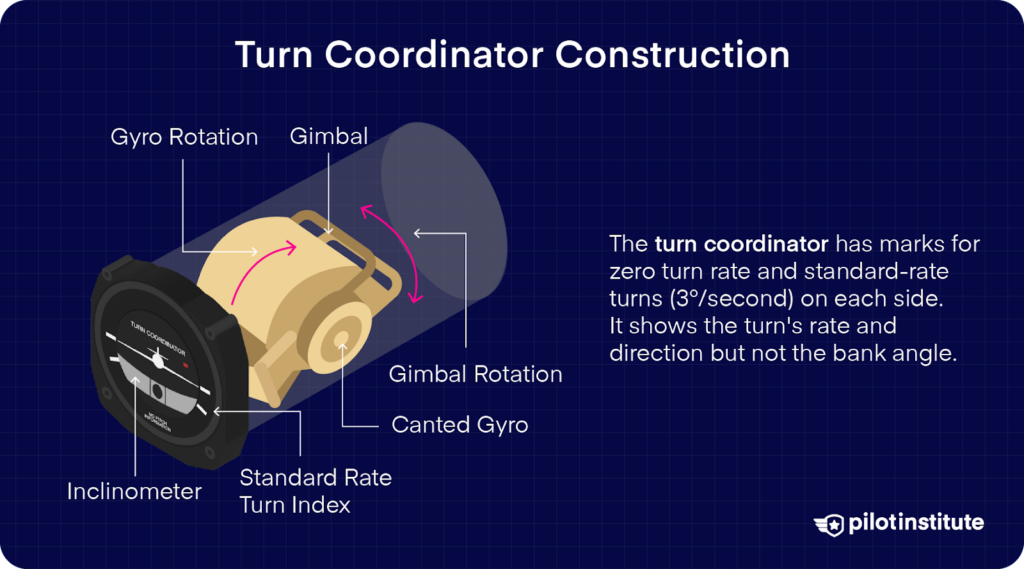
The turn coordinator is either electrically or, less commonly, vacuum-driven. An electrical turn coordinator can act as a backup bank indicator in the event of a vacuum system failure.
A red flag, typically found on the right side of the instrument above the miniature airplane symbol, indicates the operational status of the instrument.
This is similar to the flags on other gyroscopically driven instruments such as the Attitude Indicator (also known as an Artificial Horizon (AH)).
It is important to note that the flags only indicate a loss of power/vacuum pressure; they do not check the validity of the gyroscope.
In other words, if the gyroscope itself were to fail, the instrument would indicate incorrectly and no red flag would be present.
The Standard Rate Turn
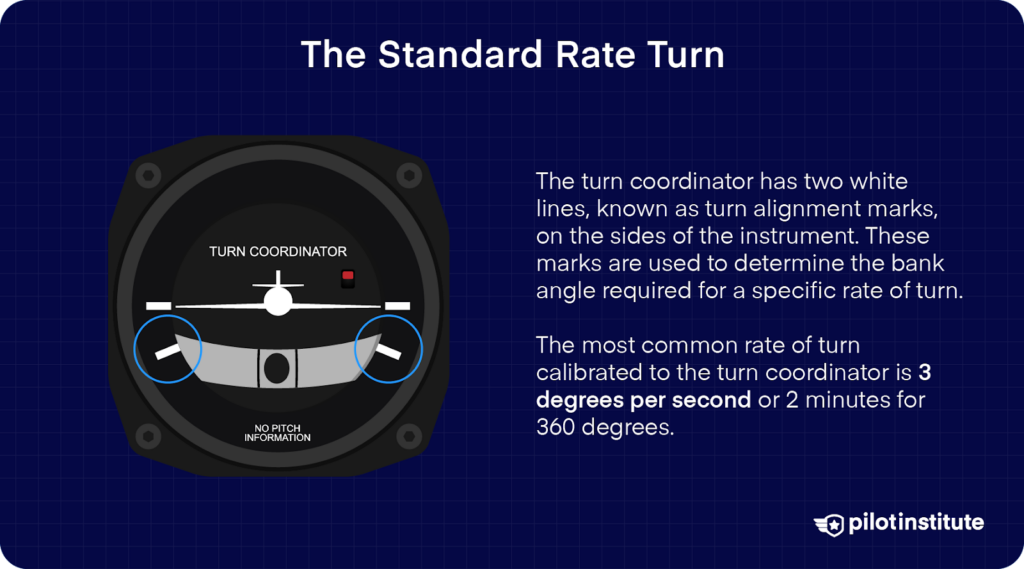
The turn coordinator has two white lines, known as turn alignment marks, on the sides of the instrument. These marks are used to determine the bank angle required for a specific rate of turn.
The most common rate of turn calibrated to the turn coordinator is 3 degrees per second or 2 minutes for 360 degrees. This rate of turn is often referred to as the “standard” rate of turn.
The rate of turn is dependent upon True Airspeed (TAS) and bank angle. In other words, for a higher True Airspeed, a greater bank angle is required to maintain the same rate of turn.
An approximate bank angle required for a standard rate turn can be obtained by dividing the True Airspeed (in knots) by 10 and then adding 7. For example, the bank angle required for an aircraft traveling at a True Airspeed of 120 knots is:
- 120/10 = 12
- 12 + 7 = 19
- 19 degrees Angle of Bank (AoB) required.
The Turn and Slip Indicator
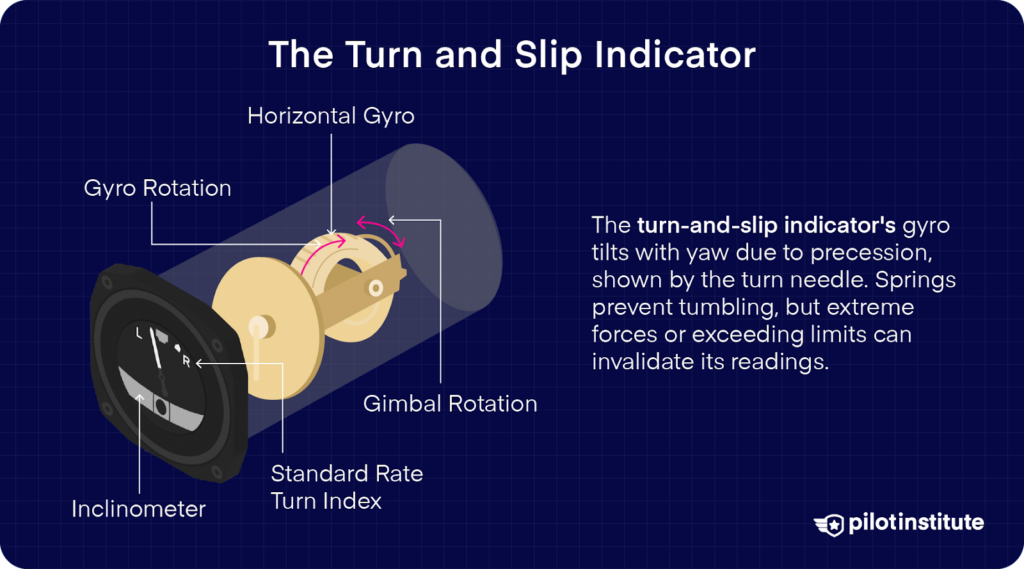
An older design of the turn coordinator is the turn and slip indicator. Similar to the turn coordinator, the turn and slip indicator is gyroscopically driven.
Unlike the turn coordinator, this gyro is mounted along the aircraft’s longitudinal axis and cannot determine yaw or roll.
Instead, the turn and slip indicator only provides the rate of turn information. Additionally, an inclinometer provides turn slip/skid information in the same manner as the turn coordinator.
The Future of the Turn Coordinator
While the turn coordinator has been a vital part of the flight deck for decades, particularly in light aircraft, its future is uncertain.
With the introduction of integrated balance (slip/skid) indicators in Electronic Flight Information Systems (EFIS), a dedicated turn coordinator instrument has become redundant in a modern cockpit.
The turn coordinator can also legally be replaced by a secondary Attitude Indicator, ideally utilizing a system independent of the primary attitude indicator.
However, the balance (slip/skid) indicator portion of a turn coordinator remains a mandatory instrument.
Conclusion
The turn coordinator is an undoubtedly valuable instrument that will remain in analog cockpits for years to come.
The uniqueness of the turn coordinator can be found in the fact that it is two instruments in one. This, unfortunately, is also what will lead to it becoming obsolete in the future.
